Prospecting & Detecting
Understanding Skim Bar Placers
September 2018 by Chris Ralph
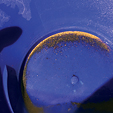 Perhaps the most notable thing about skim placers is that they form on the top surface of gravel bars, as opposed to coarser gold placers where the weight of the gold particles allows the gold to settle down on or near bedrock.
Perhaps the most notable thing about skim placers is that they form on the top surface of gravel bars, as opposed to coarser gold placers where the weight of the gold particles allows the gold to settle down on or near bedrock.
Reminder: Annual Claim Filings Due
Mining claimants who wish to retain their mining claims on Bureau of Land Management and Forest Service lands through the 2021 assessment year must pay a maintenance fee or file a maintenance fee waiver certificate on or before September 1…
Colorado to California for Gold
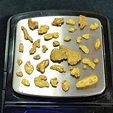 The total after a great day added with the previous days put them up to 9.07 pennyweight—just under a one-half ounce of beautiful California gold.
The total after a great day added with the previous days put them up to 9.07 pennyweight—just under a one-half ounce of beautiful California gold.
Reminder: Annual Claim Filings Due
Please note that new mining claims filed on or after September 1, 2019, will be subject to the new fee schedule.
Becoming a Successful Detectorist
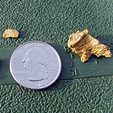 During my adventures I’ve learned a few key best practices that help me to consistently find gold nuggets with my detectors. You can apply many of these best practices to any type of prospecting. These best practices are really common sense; however, they are easy to neglect.
During my adventures I’ve learned a few key best practices that help me to consistently find gold nuggets with my detectors. You can apply many of these best practices to any type of prospecting. These best practices are really common sense; however, they are easy to neglect.
Detecting Clay Seams
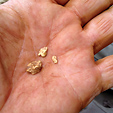 Because the old timers were so good at locating the better paying deposits—most of them along clay seams in this particular area—it makes good sense to try and locate these clay lines at old mining sites.
Because the old timers were so good at locating the better paying deposits—most of them along clay seams in this particular area—it makes good sense to try and locate these clay lines at old mining sites.
Gold Prospecting in Gatesville, Indiana
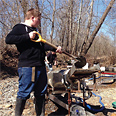 Gatesville is not the only place to find easy public access for gold prospecting opportunities in Central Indiana.
Gatesville is not the only place to find easy public access for gold prospecting opportunities in Central Indiana.
A Walk Through The Gold Indicators
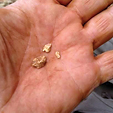 The question that most new people have is, “What do I detect?” Most people have a picture in their mind of what it takes to make what they are seeing a good place to detect. This is what I will try to sort out for you.
The question that most new people have is, “What do I detect?” Most people have a picture in their mind of what it takes to make what they are seeing a good place to detect. This is what I will try to sort out for you.
Subscription Required:
Ask The Experts - Why is there no detector signal with pyrite?
• Ask The Experts - Need assaying advice
• Ask The Experts - Can you tell me anything about the Cherry Creek District in Nevada?
• Legislative and Regulatory Update
• Detecting Canyon Bedrock in The Sierras
• Mining Journal Receives Honor
• Gold Prospecting: For Better or Worse
• New Research Tool for Miners in Wyoming
• PLP Update
• Have We Hit 'Peak Gold'?
• Old Mine Sites and New Technology
• What Happened to The Gold Prospecting and Mining Summit?
• Melman on Gold & Silver
• Mining Stock Quotes and Mineral & Metal Prices







